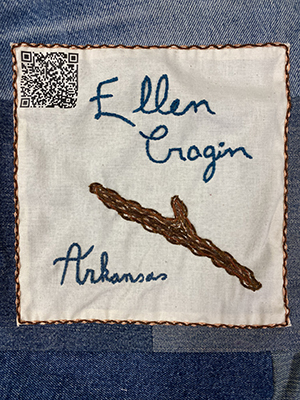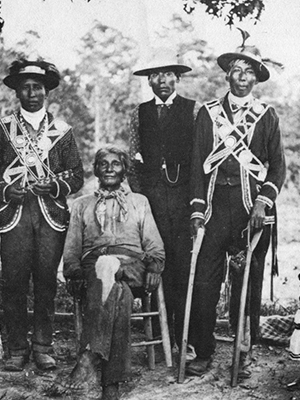Ellen Cragin
"I was born on the tenth of March in some year, I don't know what one. My mother she didn't work in the field. She worked at a loom. She worked so long and so often that once she went to sleep at the loom. Her master's boy saw her and told his mother. His mother told him to take a whip and wear her out. He took a stick and went out to beat her awake. He beat my mother till she woke up. When she woke up, she took a pole out of the loom and beat him nearly to death with it. And that was the last I seen of her until after freedom. She went out and got on an old cow that she used to milk… she rode away from the plantation, because she knew they would kill her if she stayed. My mother was named Luvenia Polk. She got plumb away and stayed away. My father was an Indian. His master's name was Tom Polk. It was Tom Polk's boy that my mother beat up. They used to call me 'Red-Headed Indian Brat’. I got in a fight once with my mistress' daughter, on account of that.” – Ellen Cragin
 Annette Pinstein ’25
Annette Pinstein ’25
The history of Native Americans and enslaved Africans in America is as interwoven as slavery and the economy of America. South Carolina passed a law in 1751 to ban holding Africans in proximity to Native Americans, fearing the security of the colony and slave rebellions. Iroquois chief Thayendanegea welcomed runaways and encouraged them to marry into the tribe. The Native American adoptions practices did not discriminate on the basis of color, and Indian villages would become stations on the Underground Railroad. Some Native American people sympathized deeply with the injustice of slavery. Approximately 2.5 to 5 million Native Americans were enslaved over the 400 years between 1492 and 1900. Most of the enslaved Indigenous people were women and children because Native women could be worth 50 or 60 percent more than men. To explain the higher price, American trapper Daniel W. Jones noted in his 1850 book Forty Years Among Indians that “the girls have the reputation of making better servants than any others.” This trend continues today. Globally, 49.6 million people currently live in some form of slavery according to the Walk Free Foundation. Of these workers, 1 in every 130 are women and girls, many of whom work in the textile industry.
Sources
- Federal Writers' Project: Slave Narrative Project, Vol. 2, Arkansas, Part 2, Cannon-Evans. 1936. Manuscript/Mixed Material. Federal Writers' Project: Slave Narrative Project, Vol. 2, Arkansas, Part 2, Cannon-Evans | Library of Congress.
- Perspective: The Other Slavery
- Stitched with slavery in the seams | Walk Free
